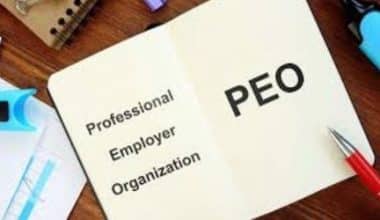Public speaking skills are necessary in most jobs and are essential for increasing your confidence and presence in the workplace. For some jobs, this talent permits employees to fulfill daily tasks, so it’s critical to understand how to improve your public speaking skills. Understanding how to do so will assist candidates in advocating for their views and increasing involvement, which can lead to increased confidence and overall development. In this post, we will cover public speaking, provide examples and types, and share tips on how to improve the skills.
What Is A Public Speaking Skill?
A public speaking skill is any quality that assists candidates in maintaining a positive presence, engaging with their audience, and communicating coherently in order to convey their thoughts. These abilities enable public speakers to turn a boring discourse into an engaging and thrilling experience for their audience. Candidates must have these skills in the job because they may be asked to host public speaking events such as presentations, conferences, trade exhibitions, or special events. Public speaking can mean communicating with an audience you already know or speaking to hundreds of strangers.
While public speaking is a skill, it is composed of other communication skills that enable public speakers to connect with an audience. These abilities soothe the speaker, reduce listener boredom, and ensure that the message of the speech is understood. Hiring managers may actively seek people with the best public speaking ability for tasks where employees produce regular speeches or presentations, such as project management roles, to ensure they can succeed under pressure. Some advantages of having good public speaking skills include:
- Increases audience participation
- Allows a clear message to be absorbed by an audience
- Boosts self-esteem
- Improves critical thinking and debate abilities
- Provides personal fulfillment
- Provides opportunity for new social and networking activities.
Public Speaking Skills Examples
The following are some examples of public speaking skills components:
#1. Clear articulation
The ability to explain ideas coherently is referred to as clear articulation. This includes ensuring that your message is understood by their target audience. Candidates with clear articulation do not use filler words such as ‘um’ or ‘ah’. Filler language can dilute a message and mislead an audience, so stick to your presentation plan and convey the important components of a speech.
#2. Excellent presentation style
Presentation style is an important factor in keeping your audience interested in your content. Presentation style refers to how you present yourself as well as the tactics you employ to transmit information. A good presenting style entails employing a variety of presentation methods to deliver information, such as speaking and using technology-based presentations such as slideshows. This makes the presentation more lively and increases audience participation.
#3. Connecting with the audience
The capacity to connect with an audience is also part of good public speaking. There are various ways to accomplish this, such as by asking questions, incorporating audience involvement, or leveraging audience stories to support your point. Connecting with an audience allows you to personalize your presentation and encourages your audience to participate. Connecting with an audience may also make them more responsive and capable of absorbing the message of your presentation.
#4. Excellent presence
The way public speakers hold themselves is an important aspect of effective public speaking. The speaker’s personality and attitude toward a public speaking event are referred to as their presence. Being confident, maintaining a professional appearance, connecting with the crowd, and maintaining eye contact all contribute to having a strong presence. Learning how to calm yourself is an excellent technique to increase your presence. It is common to feel nervous before a public speaking event. Breathe deeply and concentrate on the message you want to impart to your audience.
Types of Public Speaking Skills
Public speaking skills demonstrate how well you understand the provided idea and how well you can engage your audience. Here are the top three types of public speaking talents that you may hone with practice.
#1. Communication skills
To improve your public speaking skills, you must be able to deliver your message and express your views and opinions clearly. Furthermore, you must practice several areas of communication, such as managing your voice, speaking pace, self-awareness of your body language, and others. You can also improve your ability to match your speech patterns to the degree of expertise of your audience with practice.
#2. Clear articulation
Avoiding interruptions in your speech makes you an immediate hit with your audience. Verbal interjections such as ‘um’ and ‘ah’ might detract from your speech. Furthermore, you are a competent public speaker if you have an exceptional command of the language, a large vocabulary, crisp pronunciations, and proper syntax. Clear articulation helps your audience grasp and appreciate the notion, issue, or topic.
#3. The ability to communicate with the audience
When giving a public speech, it is critical to connect with your audience and acquire their trust. The ability to connect with your audience goes a long way toward convincing and pushing them to act. Creating an environment that enables your audience to interact with you is what distinguishes you as a good public speaker.
Other additional categories of public speaking abilities exist in addition to the types of public speaking skills outlined above. These include self-assurance, presentation style, and enthusiasm.
The Importance of Excellent Public Speaking Skills
Strong public speaking skills will set you apart in both college and your job, making you feel more secure and allowing you to take on leadership roles.
One of the most powerful methods to get your point across, display your knowledge, and influence people is through public speaking. It can also assist you in staying organized and improving your writing and interpersonal communication skills.
Many people who appear perfectly at ease in front of large groups start off with a very low level of public speaking anxiety. You can give yourself significant benefits in life by mastering this fear, practicing, and acquiring confidence.
How to Improve Your Public Speaking Skills
You may steadily develop your skills and become more comfortable giving presentations and speeches by adopting various public speaking skills into your daily life. These recommended practices include paying attention to your body language, researching what works well for exceptional public presenters, practicing breath control, and planning ahead of time.
#1. Study Great Public Speakers
One of the most effective strategies to develop your public speaking talents is to observe and learn from excellent speakers. To get started, look for examples of exceptional public speakers on YouTube.
Take note of these people’s body language while you observe them. You’ll notice that it stays open and inviting. They use their arms and hands to emphasize their main arguments. They also prevent excessive fidgeting and make good use of the available area to captivate the audience’s attention.
Take note of how the speakers pace themselves. They take their time and speak slowly and deliberately. Furthermore, they use pauses to keep the audience involved and do not rush. They may employ suitable and effective humor or anecdotes.
#2. Your Body Language Should Be Relaxed
Fear of public speaking can cause tension, which might alter your body language. The most effective public presenters maintain appropriate posture, create eye contact with the audience, and move in natural ways.
Good body language enhances your performance and assists the audience in understanding and remembering what you say. Keep your hands out of your pockets and your arms crossed. Instead, start with your arms at your sides and convey your statements with deliberate hand motions.
Take a look around the room. Don’t spend too much time staring at the ground or your notes. As your confidence grows, you might even start to make eye contact with people watching your presentation.
#3. Control your voice and your breathing.
For many people, public speaking alters their perception of time, causing them to speak faster than they would usually. Be mindful of this occurrence and present at a steady pace. It will help you relax and allow the audience to better understand what you are saying.
Breath control can assist you in accomplishing this. Experiment with pushing air into and out of your lungs with your stomach. Take ten slow, deep breaths before beginning your public speaking.
#4. Make a list of talking points.
Prepare a set of talking points, including the important messages you want your audience to know, feel, and comprehend by the time you finish speaking. Begin with 3-5 broad messages, then create numerous supporting elements for each theme.
Organize your talking points chronologically, starting with the message you want to address first. Having an outline of your messages on hand keeps you on track during your presentation and ensures you don’t miss any essential aspects.
#5. Understand Your Audience
Take the effort to learn your audience before giving a presentation so that you can personalize your speech to them. Consider what matters to them and what they are likely to find valuable.
The type of event at which you will be speaking will also have an impact on your strategy. A formal gala, for example, may necessitate a different sort of presentation than a classroom setting with a group of your fellow students.
#6. Include a Visual Aid
A visual tool, such as a PowerPoint presentation, can assist you in making your important points while engaging the audience more effectively. Your visual assistance should supplement rather than detract from your presentation.
Avoid using text-heavy PowerPoints or reading from your slides verbatim. Create slides with graphs and visuals to illustrate your views. If you must use text, keep it to a few brief bullet points.
#7. Rehearse
Simply practicing your public speaking skills is one of the most effective methods to enhance them. You may improve your messaging and find better ways to express key parts of your presentation by repeating it. After you have practiced your speech several times, you will naturally feel more at ease delivering it in front of an audience.
#8. Take Notes on Your Speeches
Record your public speaking engagements on video so you can review them later. Examine your body language, speech quality, and tempo. Even the top speakers do this on a regular basis and are constantly looking for methods to improve their public speaking talents.
#9. Call a Friend
Bring a trusted friend to observe your presentation. Inform them that you are searching for constructive comments and that they are free to be absolutely honest with you. Give them a few tips on what to look for so they can notice whether you still need to work on your pacing, fidgeting, or delivery in a specific portion.
#10. Attend a Public Speaking Course
Students who take public speaking training quickly increase their ability to talk and deliver in front of an audience. They acquire confidence when they learn from experts and seek help from their peers. If you are afraid of public speaking, you can connect with other students who are facing the same difficulty.
Consider taking an online public speaking course if you want to improve your public speaking skills when making virtual presentations. An in-person session may be a better alternative if you want to learn how to speak in front of a real audience. You may also be able to join student clubs that will allow you to hone your public speaking abilities.
Taking public speaking lessons at college, especially early on, can help you excel in the rest of your studies and offer you a competitive advantage when it comes time to start your career.
Top Free Public Speaking Courses
#1. Speaking with Confidence
Confidence is an important part of building great presentation skills and is an aspect of becoming a successful public speaker. As a result, EdApp created this free public speaking training course to help your employees acquire confidence when interacting, particularly with groups of people such as your customers. It offers advice and tactics for avoiding verbal fillers and improving nonverbal fluency in order to have better conversations.
This speech training is presented as microlearning. It also contains gamification, which may be used to practice public speaking. There’s also audio narration and short-form movies, making it more entertaining than typical public speaking exercises. Use this course to easily integrate confidence building into your public and persuasive speaking training and development program!
#2. Excellent Customer Service Through Communication
Excellent Customer Service Through Communication, which is also accessible on EdApp, can be utilized as a follow-up course to the Speaking with Confidence Course. It assists your students in developing fundamental conversational skills such as appropriate enunciation, active listening comprehension, and speaking confidence. Although this training is tailored to the customer service industry, the insights on increasing communication skills are applicable to better public speaking. This course is totally editable and free, allowing you to modify it to your company’s best practices before delivering it to your workers!
#3. Motivational and Public Speaking 101
Universal Class’s Motivational and Public Speaking 101 course is designed to improve your employees’ approach to presenting a message to an audience. This public speaking training course gives fundamental knowledge on successful communication and aids in the removal of speech delivery difficulties. It delves deeper into the fundamentals of a speech and aspects of public speaking.
Universal Class creates a syllabus for each course and delivers lectures via videos that can only be accessed through a web browser. There are also review articles and examinations for each subject. A minimum of 70% on the final exam is necessary after completing the course.
#4. Speaking in Public
Speaking in Public is a free Google Digital Garage public speaking training course. The classes are intended to help your staff become more competent public presenters and to teach them how to customize speeches to specific audiences. It covers speech preparation approaches, body language principles for communication, and best practices for presenting professional presentations. This public speaking workshop teaches your employees how to communicate more concisely among teams and with clients.
Google Digital Garage’s courses are delivered via short-form videos and contain a knowledge quiz at the end of each lesson to improve information retention.
#5. Getting Your Voice Heard
The Spark designed the Getting Your Voice Heard course, which is available for free in EdApp’s course collection. Being assertive is an important component of communication, so this professional speaking class is aimed at showing students how to express themselves more effectively. Your staff will learn how to communicate assertively while respecting their audience’s opinions and values in this public speaking training session. It also contains lessons on the various reaction types as well as frameworks for exercising assertiveness in communication. Your staff will deliver presentations, conduct meetings, and pitch proposals more effectively if they grasp the value of assertiveness in public speaking. This could lead to new or expanded business prospects for your firm.
What Is The Definition Of Public Speaking?
The technique of delivering knowledge to a live audience is known as public speaking, often known as oration or oratory. The material conveyed is purposefully designed to enlighten, convince, and entertain. Many people are afraid of public speaking and lack the motivation to improve their skills.
What Are The Qualities Of A Good Public Speaker?
- Confidence.
- Concise.
- The ability to read a room
- Enthusiasm.
- Self-awareness.
- Authenticity.
- Understanding how to dress
- Adaptability.
What are The Three Primary Objectives of Public Speaking?
The three basic purposes of public speaking are to inform, convince, and entertain. It is easier to arrange your presentation if you know what you want to say.
In Conclusion,
Most people, if polled, would claim they dislike public speaking. They may even admit to being terrified of public speaking, which is a very common worry. They could also be shy or introverted. For these reasons, many people avoid speaking in public whenever possible. If you’re someone who avoids public speaking, you’re missing out.
Improving your public speaking skills will help you whether you are a small business owner or a student.
- PERSONAL BRANDING: Definition, Examples, Tools & All You Need To Know
- SOCIAL SECURITY HOURS: How To Apply/Complete Guide
- SALES STRATEGY: Meaning, Examples, Plan, Types and Presentation
- How Much Do Lawyers Make: Lawyer wages in The US






